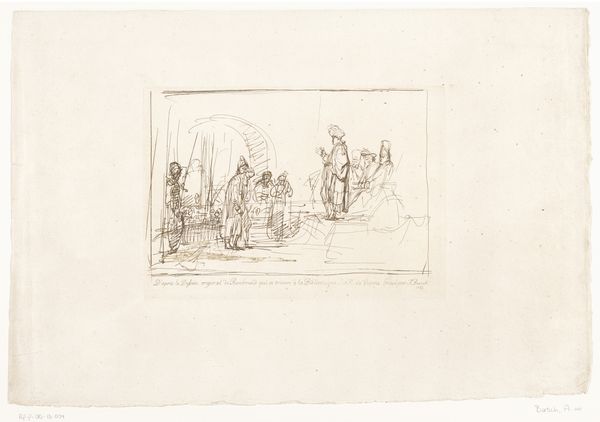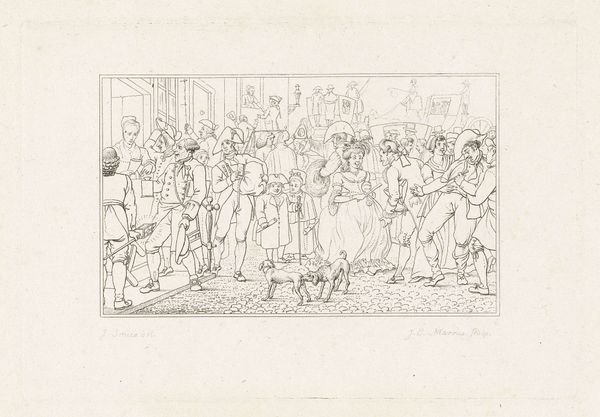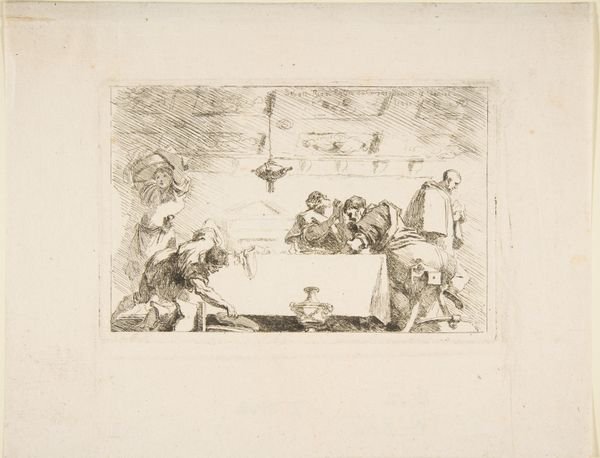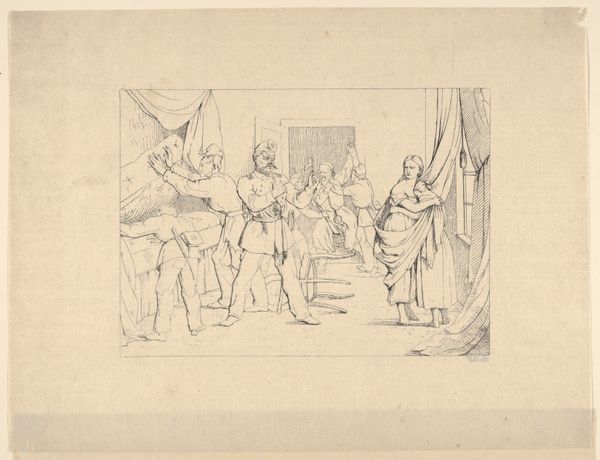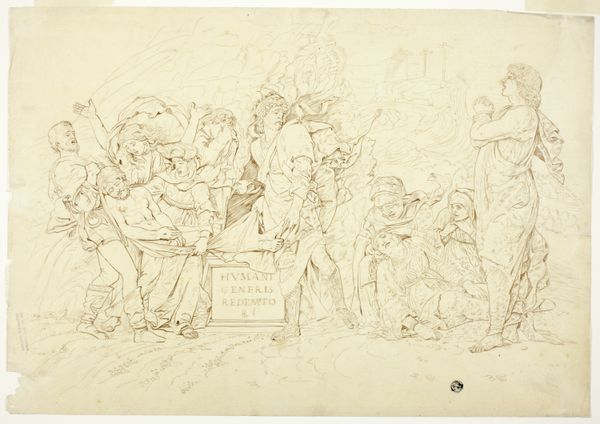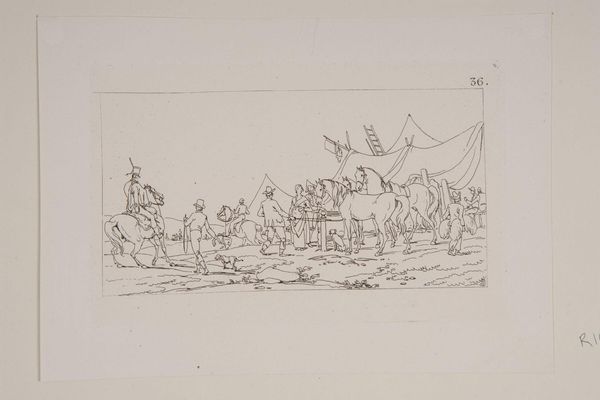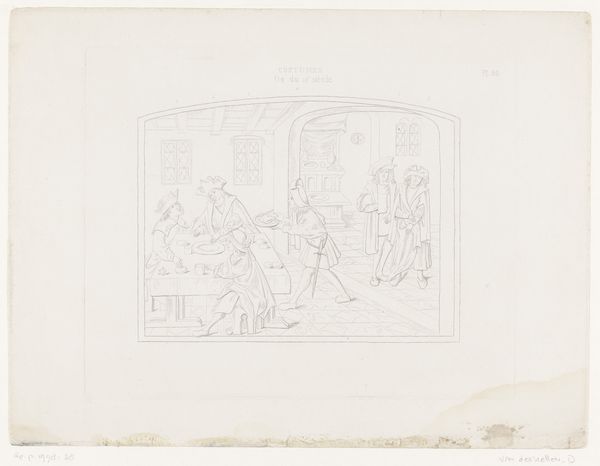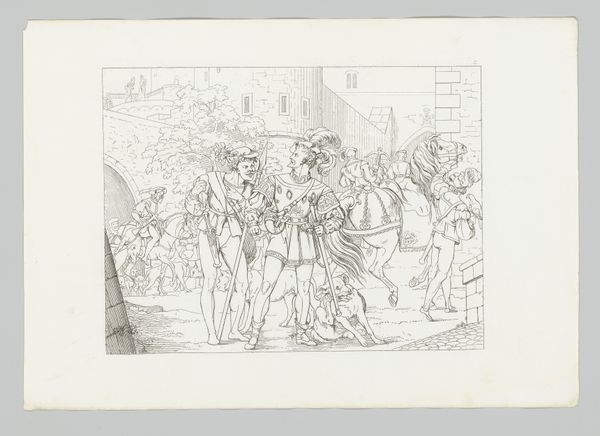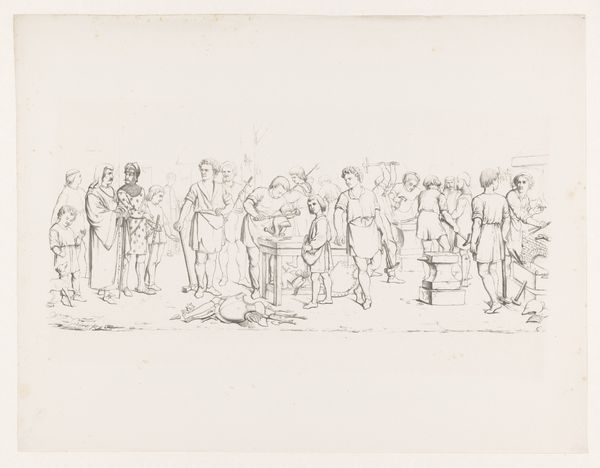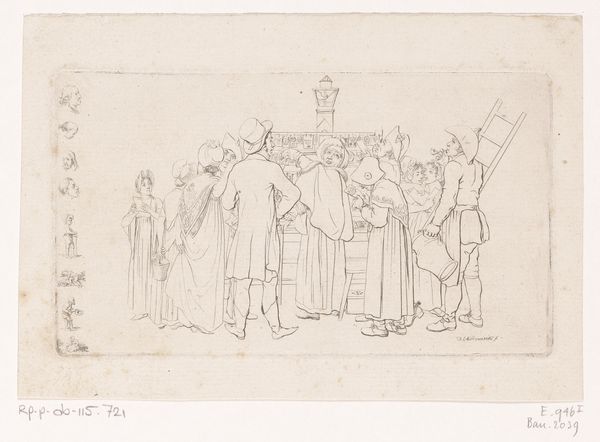
Nadenkende man te midden van de Dood en Vader Tijd en wereldlijke bezigheden 1807
0:00
0:00
jacobernstmarcus
Rijksmuseum
drawing, pen, engraving
#
drawing
#
allegory
#
narrative-art
#
romanticism
#
pen
#
genre-painting
#
history-painting
#
engraving
Dimensions: height 144 mm, width 210 mm
Copyright: Rijks Museum: Open Domain
Curator: Here we have "Nadenkende man te midden van de Dood en Vader Tijd en wereldlijke bezigheden," an engraving dating back to 1807, crafted by Jacob Ernst Marcus. It resides here at the Rijksmuseum. Editor: It’s quite striking. Even in this delicate medium, there's a real heaviness, a melancholic atmosphere. The skeletal figures looming overhead certainly contribute to that sense of unease. Curator: Indeed. This work exemplifies the allegorical trend of the Romantic era, using symbolism to convey complex ideas about mortality and earthly concerns. It mirrors a broader societal obsession with death and reflection during that time, heavily influenced by historical events and philosophical shifts. Editor: It’s the stark contrast in symbols that grabs me. You've got this hedonistic image on the left, almost a bacchanal scene, with food and wine, set against the figures playing cards, clearly preoccupied. Death lurks above, personified as both Father Time and the Grim Reaper, watching them all. Curator: Exactly. The artist creates a narrative about the transience of life. Gambling and earthly pleasures versus the inevitable encounter with death and time, a narrative very potent in a post-revolutionary Europe. We see this anxiety represented across all forms of art during that period. The image serves as a warning, a ‘memento mori’, to remember our own mortality. Editor: And it is remarkably effective. The very placement of the figures—how they are grouped and respond—it reveals an anxiety still deeply relevant. This artwork's symbolism translates across generations. Curator: And understanding its production within a society undergoing immense changes deepens that appreciation, as Marcus was actively responding to his present. The artwork served as a moral compass. Editor: Reflecting on this piece, I see a visual encapsulation of a universal human tension – the pursuit of happiness against the backdrop of our own mortality. Curator: I agree, and by examining this work through a historical lens, it's clear this tension shaped so much artistic output of the time.
Comments
No comments
Be the first to comment and join the conversation on the ultimate creative platform.
